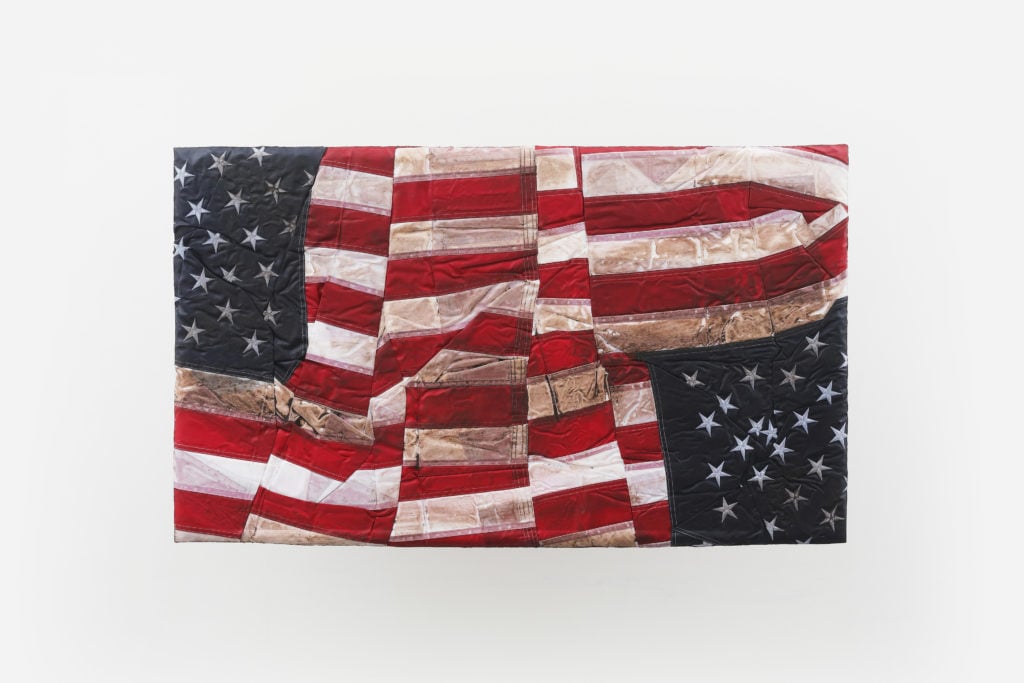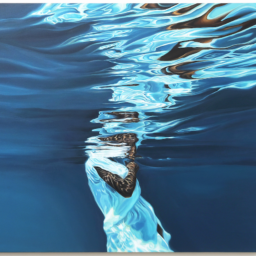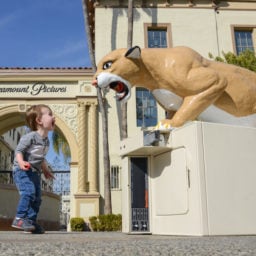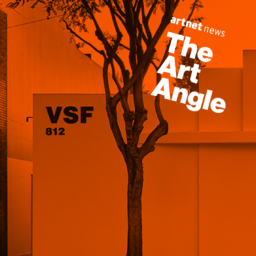Welcome to New Models, a series that highlights galleries innovating beyond the traditional ways of exhibiting and selling art in the primary market. From forward-thinking collaborative initiatives to novel uses of technology, the concepts it unpacks prove that there are more paths to success and sustainability as an art dealer than the default settings.
Ask members of the Los Angeles arts ecosystem what they appreciate most about the city, and you’re very likely to hear praise for its atmosphere of openness and possibility. In contrast to more rigidly structured arts capitals, LA feels like one of the rare places where new ideas enter the arena with an advantage over old ones. This pioneering attitude only strengthens at a time when nearly everything inside and outside the industry is in crisis, and no gallery makes the case clearer than Various Small Fires.
Cofounded in 2012 by Esther Kim Varet and her husband, Joseph Varet, Various Small Fires set out from the beginning to do things differently. Most notably, while much of the Western art market fixated on Hong Kong and Shanghai in its pivot to East Asia, VSF (as it’s commonly known) instead embraced Kim Varet’s first-generation Korean-American heritage and opened a permanent space in Seoul in April 2019. That decision now looks even savvier than it did at the time, since Korea’s expert response to the global health crisis allowed the country and its arts-rich capital to begin responsibly reopening weeks before any other nation in the world.
With VSF’s location in Hollywood’s increasingly muscular gallery district still shuttered along with all other non-essential businesses, its Seoul space has now become the nucleus of an innovative three-part strategy that has leveraged physical space, digital engagement, and coalition-building. And this strategy’s early success is worth every dealers’ attention.
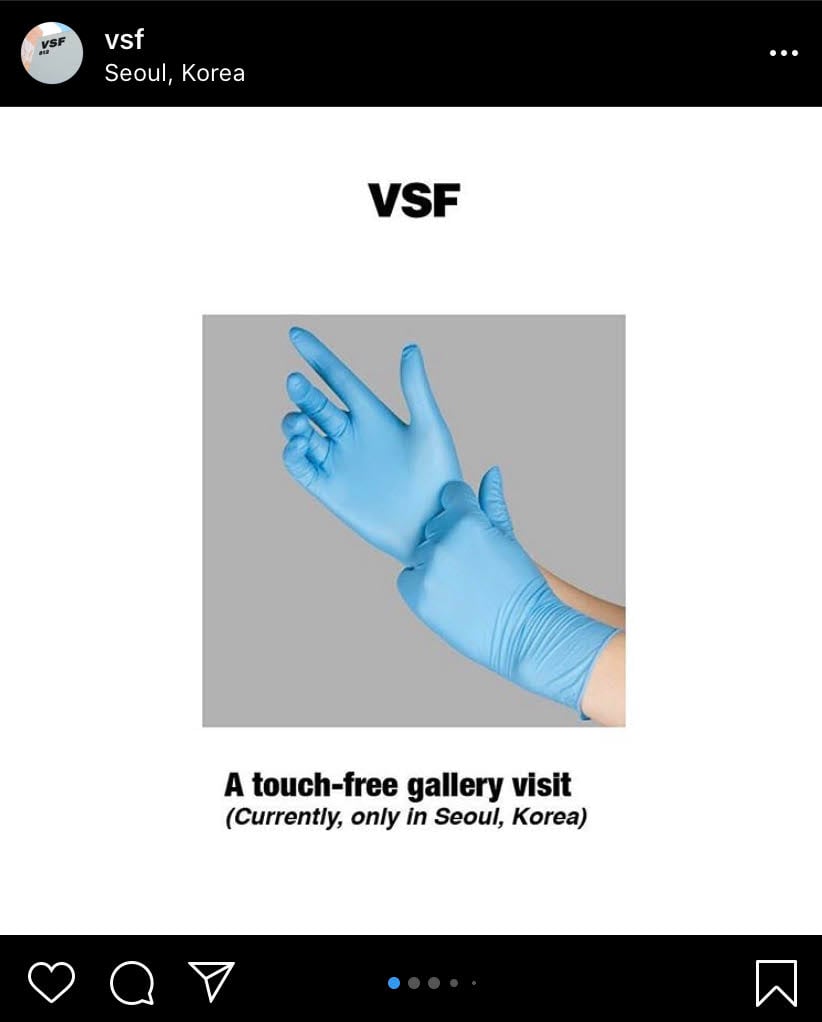
Instructional Instagram post explaining how to book a touch-free viewing at Various Small Fires, Seoul. Courtesy of Various Small Fires.
1. Online Appointments for “Touch-Free” IRL Viewings
The Concept: In the anxious days leading up to each city’s respective shutdown, VSF had begun piloting online reservations to keep its Los Angeles and Seoul galleries active—yet safe—spaces for aesthetic enrichment. Integrated into VSF’s website, the system allowed users to book a 30-minute private viewing at either location during its normal operating hours. Crucially, when a visitor arrives for their appointment, the front door is already open, and the gallery is clear of all but one (masked and gloved) employee.
Although the reservation system is on hold in Los Angeles while VSF’s space there remains closed to the public, VSF Seoul has been booking these “touch-free” IRL viewings of “Alternative Facts”—its new exhibition of Trumpism-targeting, wall-mounted cast-resin sculptures by Josh Kline—since the show opened on April 11. Each appointment is also followed by a 30-minute buffer to eliminate any possible overlap between visitors, as well as to give gallery staff enough time to thoroughly disinfect the space before the next reservation.
The Advantages: VSF’s artists get to continue exhibiting; visitors get VIP treatment; and the gallery gets to continue showing and selling, with maximum peace of mind for all involved. The online bookings also give staff the opportunity to prepare materials and brush up on vital information in advance of the arrival of collectors, curators, and other key figures who might otherwise have dropped in unannounced during a calmer era.
The Results: Kim Varet says the private-booking system was received enthusiastically in Los Angeles and Seoul prior to the crisis, but it has been especially popular since the debut of Kline’s show, which was synced perfectly with Korea’s relaxation of social-distancing guidelines. “By the time we rolled it out there,” she told Artnet News, “people were ready to come out [of isolation].”
She relays that museum directors, major curators, and collectors have all visited in the weeks since. And perhaps most importantly, all but one of Kline’s works had found buyers by publication time, with the last on hold for a corporate collection in Seoul.
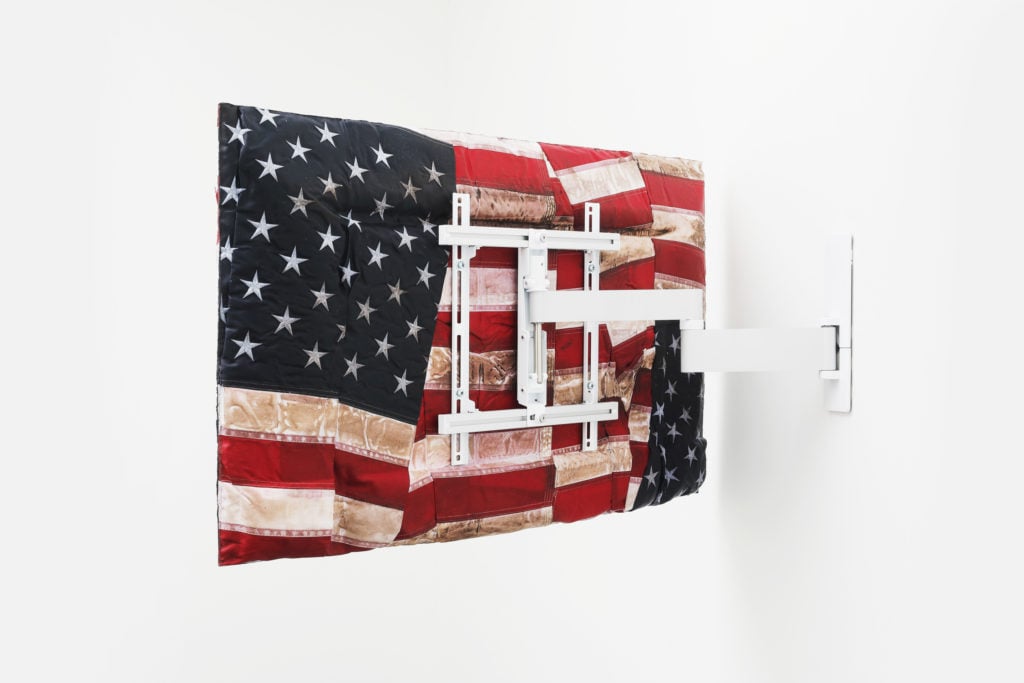
Josh Kline, detail view of Reality Television 12, 2020. Courtesy Various Small Fires, Los Angeles and Seoul.
2. Zoom Tours and Proactive Digital Outreach
The Concept: For those who aren’t physically in Seoul (or who aren’t ready for an in-person visit just yet) VSF is now also providing 30-minute virtual walkthroughs of Kline’s exhibition via the now-ubiquitous video-conferencing software Zoom. The remote tours can be booked through the same page on the gallery’s website as the traditional private viewings, but up to 10 concurrent viewers can take part.
While the walkthroughs are not elaborate productions—they consist of a lone cameraperson shooting a tour led by a single VSF Seoul staff member—the gallery designs them in close collaboration with the featured artist. Kline, for example, wanted to ensure that remote viewings of “Alternative Facts” highlighted the wall mounts and wraparound detailing of each sculpture almost as much as the frontal view. He also communicated critical themes and talking points about specific works during multiple rehearsal sessions in the days leading up to the opening.
The Context: The Zoom appointments are just one component of a larger campaign to make digital engagement one of VSF’s core competencies. The effort shifted into high gear when the gallery hired Hilde Lynn Helphenstein (AKA art-world meme champion Jerry Gogosian) as its first digital director earlier this spring. Her overarching mandate is to use a variety of platforms and initiatives to make VSF as adept at the social-media game as the best dealers are at IRL social functions. “Nothing will ever replace viewing art in person, but technology is our best prosthesis for this,” Helphenstein told Artnet News. “So we want the most technologically advanced prosthesis, not a peg leg.”
The Advantages: The benefits of the virtual walkthroughs transcend the most obvious one here in the age of social distancing. In the past, Kim Varet says, the gallery would primarily have tried to interest local and regional contacts in Kline’s exhibition at VSF Seoul. No longer. “Now people are preconditioned to do these remote viewings, and we can open it up to a wider audience.” If the Zoom tours carry on past the end of the shutdown, as Kim Varet and her team hope, the associated reduction in flights and drives to the physical gallery will also further reduce VSF’s carbon footprint—a major goal for a business whose LA location is already 100 percent solar-powered.
The Results: The Zoom press preview attracted art writers from New York, Miami, Chicago, and Los Angeles, and a VIP walkthrough held the following week consisted of not only a mix of local and international collectors and advisors, but also board members at premier stateside institutions, including the Whitney and LACMA.
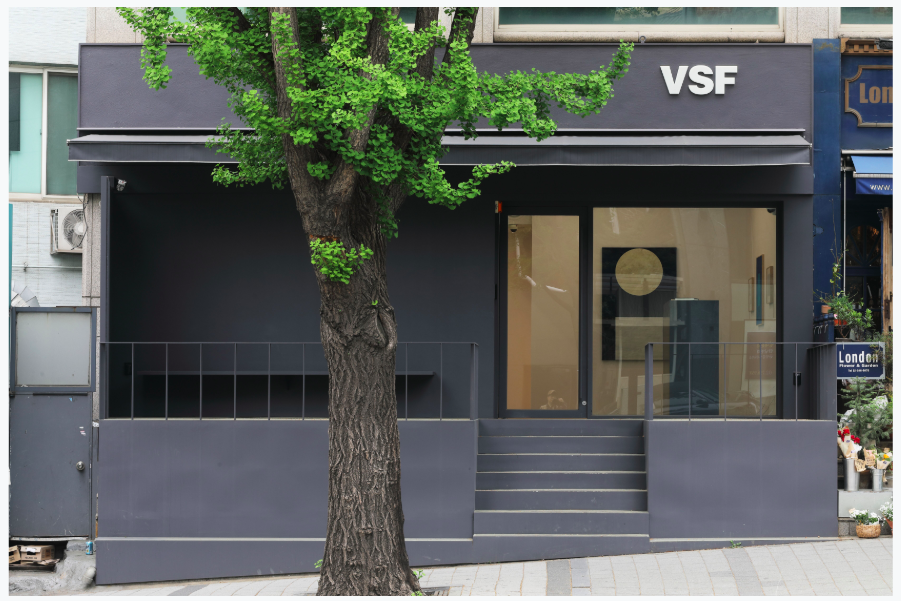
The facade of Various Small Fires in Seoul, South Korea. Courtesy of Various Small Fires, Los Angeles, and Seoul.
3. Ongoing International Gallery Shares
The Concept: At least until the crisis is over (but possibly longer), Kim Varet plans to alternate the Seoul space’s programming between a VSF show and a show in partnership with a dealer based outside of Korea. In the latter case, VSF and the visiting gallery split all costs and profits associated with the exhibition.
The Context: Kim Varet regards forming and strengthening alliances with her peers as a key strand of VSF’s DNA. The trait also manifests in VSF’s presence on the operating committee of GalleryPlatform.LA, the recently announced online-sales platform jointly presented by 60 Los Angeles dealers. This perspective quickly came to the fore when she recounts her thought process about the gallery’s good fortune in Korea: “It’s awesome for us that we have Seoul open again. It’s a silver lining most galleries don’t have right now. So how do we share that with other dealers and collaborators going through a similarly traumatic period in their business careers?”
The Advantages: The long-acknowledged but under-utilized reality is that every dealer is only as strong as their coalition. “The idea that needs to change is that every gallery is its own island,” says Kim Varet.
VSF Seoul’s collaborative programming doesn’t just allow the gallery to deepen its relationships with its peers on the sell side; by extension, it also connects VSF to the artists, collectors, and other contacts those peers bring in. And since VSF is incentivized to promote the partnered exhibitions as enthusiastically as its own, the visiting dealer benefits from Kim Varet’s local and regional network too. Those bonds can propel everyone involved into new opportunities in the future.
The Results: VSF has already agreed to host multiple international dealers. The first collaboration will be with New York’s Karma, which will debut a two-person exhibition by Henni Alftan and Dike Blair in July. Respected Berlin gallerist Johann König will follow this fall.
König also proves how quickly one mutually beneficial exchange can create a virtuous cycle. He told Artnet News that, upon reopening his gallery on April 21, visitors would enjoy an online-booking system for private viewings that was inspired by VSF—and enabled by Kim Varet’s willingness to volunteer the technological details of its own reservation system. (Incidentally, König added that he reached out to Kim Varet after being impressed by her appearance on our podcast, The Art Angle.)
“I think she’s really at the forefront of young dealers in terms of how collaborative and [open to] sharing she is,” König told Artnet News.
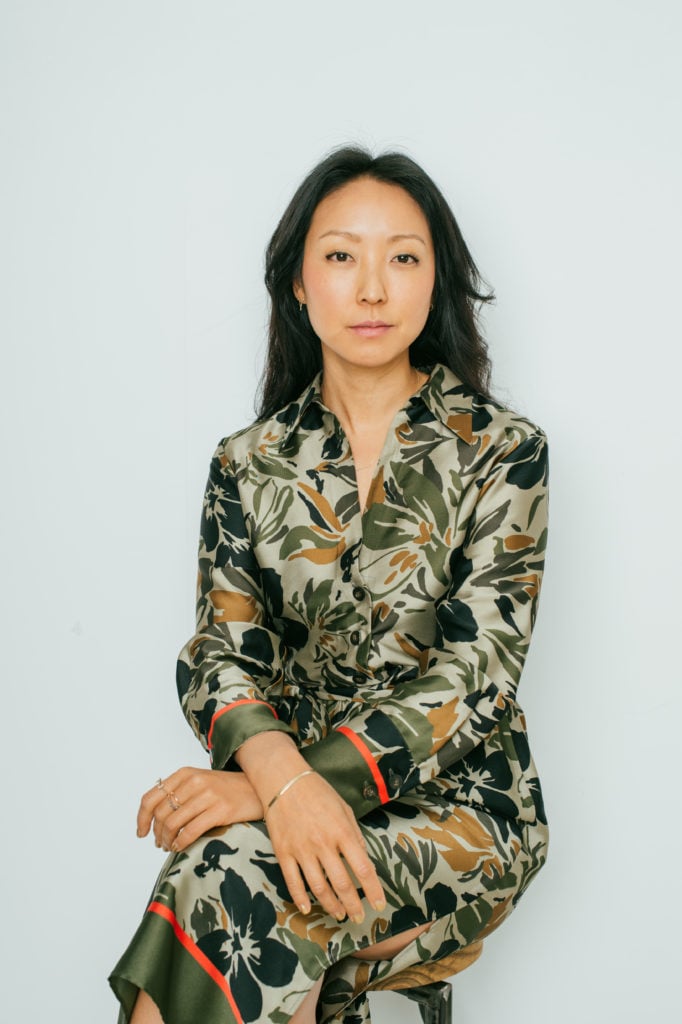
Esther Kim Varet, cofounder of Various Small Fires. Courtesy of Various Small Fires, Los Angeles and Seoul.
What Comes Next?
The changes VSF has incorporated are already leading to others. König returned the online-booking favor by directing his teach team to give VSF guidance on how to build a real-time chat tool on its website, which Kim Varet’s team had wanted to implement early on but couldn’t quite execute independently. That move will further VSF’s transition away from email—she notes that it’s long been treated as “a very snail-mail kind of correspondence” in Asian countries—and toward direct messaging on various platforms as the gallery’s primary communication interface.
In contrast to the roughly 10-week-minimum exhibitions held at VSF Seoul in 2019, Kim Varet says the gallery is also tentatively planning on shortening its Korean shows to one month each starting in June—a shift she attributes to the changing expectations of artists in an increasingly on-demand economy. And while it would be naive to assume these are the only evolutions the gallery will undergo, one certainty is that this brave new model is driving VSF in the right direction.
“For a while,” Kim Varet says, “we were held back by art-world tradition. It’s liberating to feel like we’re heading towards the art world we’ve always wanted to be in.”
